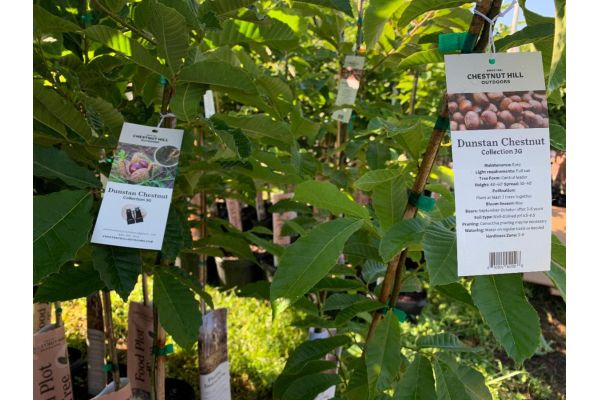We all know how important a well-rounded diet is in keeping us from becoming “well-rounded.” Deer and other wildlife also have nutritional needs, but their diets change with the seasons. That is why Chestnut Hill Outdoors offers an array of shrubs and trees that improve available nutrition and make food sources available for longer periods, supplementing natural food and filling in nutritional gaps.
Spring represents a season of new growth for plants and animals alike. Natural herbaceous vegetation provides sufficient nutrition, but early soft mast producers like plums and mulberries can change sufficient sources to abundance while providing cover when fawns, poults, and other young wildlife are most vulnerable to predation. Chestnut Hill Outdoors offers several varieties, including Everbearing and Black Mulberries and American and Chickasaw Plums. The mulberries may produce fruit as early as April and May, while the plums follow quickly in June and July.
Summer is a time of abundance, which means plenty of food but plenty of mouths to feed. Though abundant, native forbs and grasses mature and ripen, and their nutritional value declines when wildlife is most abundant and their nutritional needs for growth are peaking. This is when orchards or groves of blackberries, raspberries, blueberries, and grapes from Chestnut Hill Outdoors can bridge that nutritional gap while providing more protective cover.
As summer fades into fall, the nutritional needs of nearly grown young and their parents shift toward foods that will help them lay on fat for the coming winter. Chestnut Hill Outdoors offers a variety of highly nutritious soft mast species like apples, pears, and, best of all, persimmons. Planting both early- and late-drop varieties like Deer Candy and Deer Magnet persimmons ensures the attraction lasts longer and prevents any gaps into the next phase.
Fall is harvest time, and the soft mast begins to dwindle no sooner than hard mast species like acorns and chestnuts start dropping. Oaks are among the most sought-after fall nuts for various wildlife, but only because they are more common and abundant. Where they occur, chestnuts are preferred at a surprisingly high rate. That is especially true for Dunstan Chestnut trees, which produce larger and more nutritious chestnuts than other varieties. And they mature quicker than oaks.
As fall gives way to winter, the presence of a diverse range of hard mast trees can provide enough sustenance to help many wildlife species survive through this period of limited nutrition. A well-rounded diet ensures that more will make it and be in better condition when the cycle begins again next year.
About Chestnut Hill Outdoors
Chestnut Hill Outdoors is the best place to purchase food plot and deer attractant plants because they offer a large selection, their plants are specifically bred to attract deer, and they offer customers different-sized plants at different levels of growth. To ensure you receive the maximum benefit from their products, they also provide sound advice and instruction on proper planting and care. For more on Chestnut Hill Outdoors products and how to care for them, visit ChestnutHillOutdoors.com or call (855) 386-7826.
For more information, please visit
WWW.CHESTNUTHILLOUTDOORS.COM
Read the full article here




